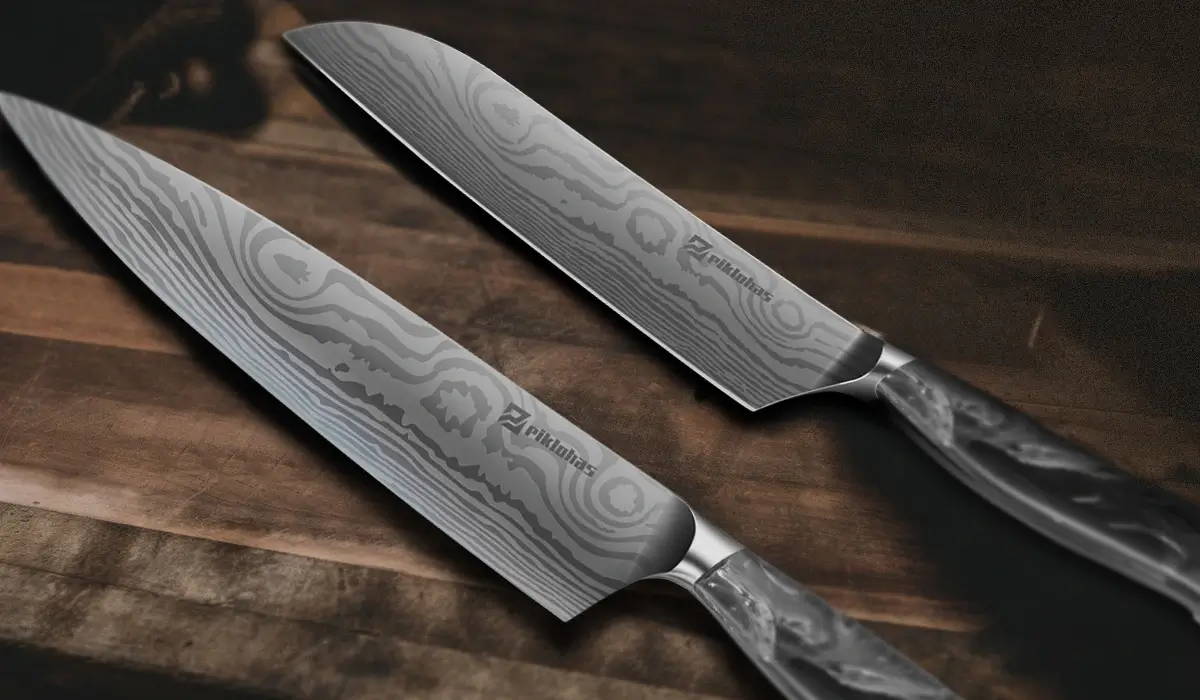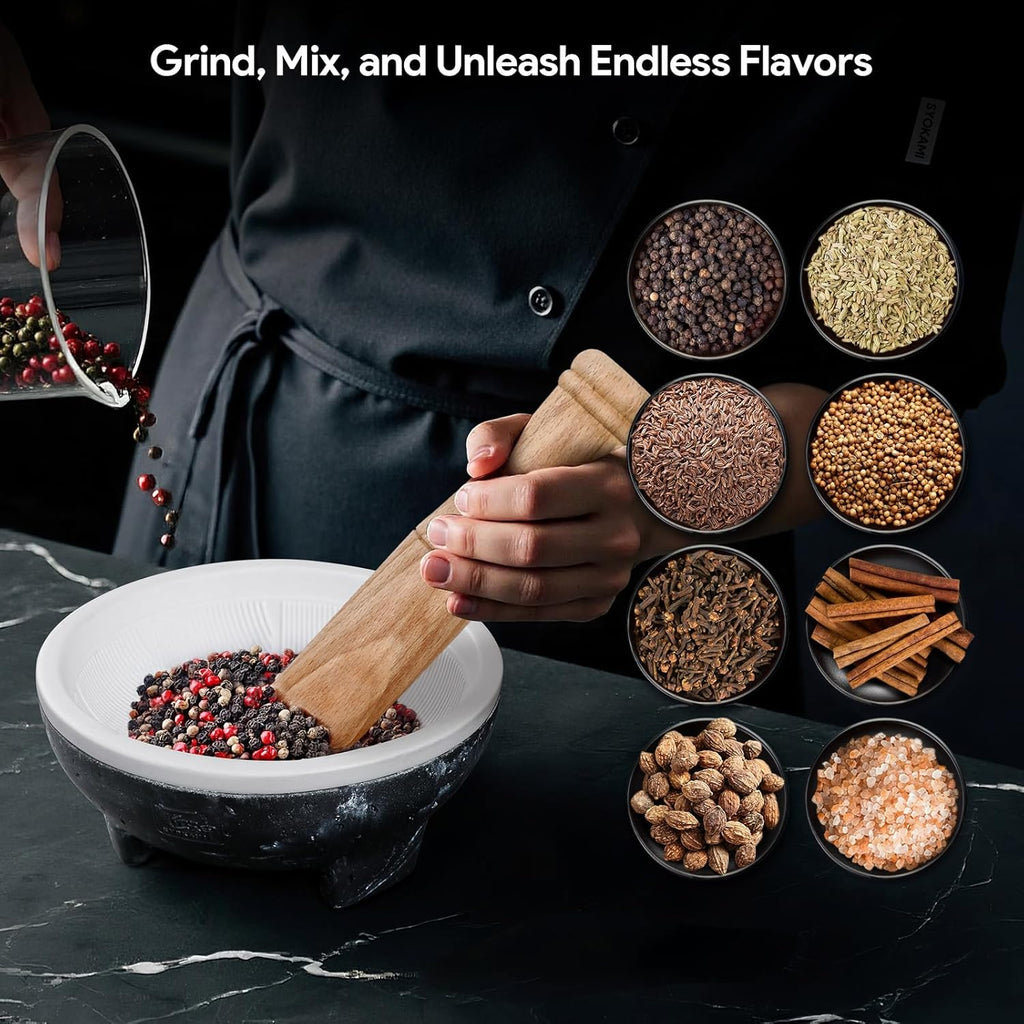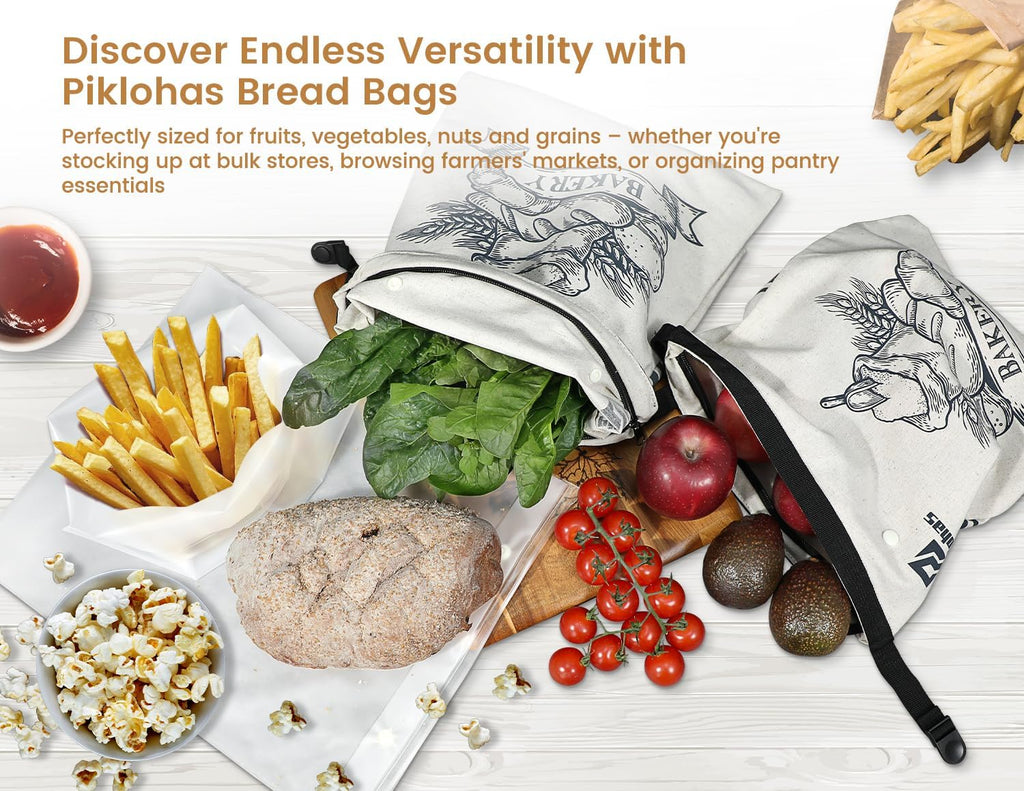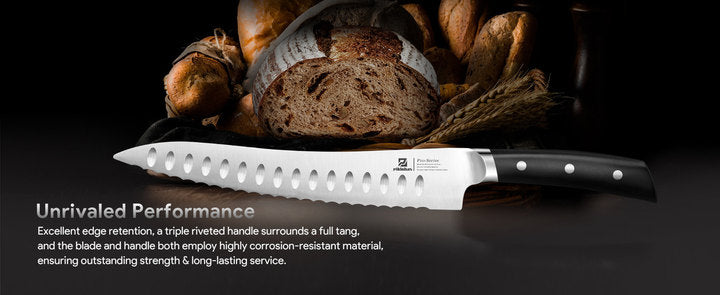
When it comes to equipping your kitchen, selecting the right tools can make a world of difference in your culinary journey. Two of the most versatile knives in the culinary world are the Santoku knife and the Chef knife. In this article, we'll explore the nuances of the Santoku knife vs Chef knife debate to help you make an informed decision.
Santoku Knife vs Chef Knife: An Overview
What Sets Them Apart?
In the world of knives, Santoku and Chef knives stand out for their distinct characteristics.
Santoku Knife
1.Originating in Japan, the Santoku knife translates to "three virtues," referring to its ability to excel in slicing, dicing, and chopping.
2.Typically shorter and lighter than a Chef knife, it's designed for precision work.
3.Its blade features a flat edge and a sharp, downward curve, making it perfect for those fine, delicate cuts.
Chef Knife
1.Also known as the French knife, the Chef knife has a curved blade that facilitates the rocking motion, ideal for tasks like mincing and chopping.
2.With a longer and broader blade, it's versatile enough to handle everything from slicing meat to crushing garlic.
3.Chef knives are of German origin and are favored in Western kitchens for their all-purpose capabilities.
When to Use Each Knife?
Santoku Knife
Precision Cutting: The Santoku knife's precision makes it your go-to for finely slicing vegetables, herbs, and boneless proteins.
Sushi and Sashimi: Its Japanese heritage makes the Santoku knife perfect for slicing raw fish for sushi and sashimi.
Stir-Fries: The Santoku's agility is an asset in stir-frying, allowing you to swiftly chop and dice ingredients.
Chef Knife
Heavy-Duty Tasks: When you're dealing with thick cuts of meat or large vegetables, the Chef knife's heft and curved blade are invaluable.
Rocking Motion: The curved blade lets you efficiently rock the knife back and forth, ideal for mincing and chopping herbs and garlic.
Versatility: A Chef knife's broad blade can handle a wide range of tasks, making it a staple in professional kitchens.
Key Differences in Design and Blade Material
The Anatomy of a Santoku Knife
Blade: The Santoku's blade is typically shorter, ranging from 5 to 7 inches, and features a flat edge with a sharp point. It's often made of high-carbon stainless steel, known for its sharpness and ease of maintenance.
Handle: Santoku knives come with either a Western-style handle or a traditional Japanese D-shaped handle. The choice here is a matter of personal preference, with the D-shaped handle offering a secure grip.
The Anatomy of a Chef Knife
Blade: Chef knives have longer blades, typically between 8 and 10 inches, with a curved edge. They are usually made of softer stainless steel or carbon steel, which requires regular honing.
Handle: Chef knives usually feature a Western-style handle that provides a comfortable grip for extended use. The handle material can vary from wood to synthetic materials.
Maintenance and Care
Keeping Your Santoku Knife in Top Shape
Regular Honing: Use a honing rod to realign the blade's edge, keeping it razor-sharp.
Hand Washing: Avoid the dishwasher; instead, hand wash your Santoku knife with mild detergent.
Proper Storage: Store it in a knife block or on a magnetic strip to prevent damage to the blade.
Maintaining Your Chef Knife
Regular Sharpening: Chef knives require periodic sharpening using a whetstone or sharpening rod.
Hand Washing: Just like the Santoku, always hand wash your Chef knife.
Safe Storage: Invest in a knife guard or magnetic strip to protect the blade and ensure safety.
Maintenance and Care
Can I use a Santoku knife for bone-in meat?
No, it's not recommended. The Santoku knife's thin blade is not designed for cutting through bones. For such tasks, opt for a heavier cleaver or a Chef knife.
Are Santoku knives suitable for left-handed users?
Yes, many Santoku knives are designed to accommodate left-handed individuals, but it's essential to check the specifications before purchasing.
Which knife is better for beginners?
For beginners, the Santoku knife is often a better choice due to its manageable size and versatility in everyday cooking tasks.
Can I sharpen a Santoku knife at home?
Yes, you can sharpen a Santoku knife at home using a whetstone or a sharpening rod. However, it's advisable to seek professional sharpening occasionally for optimal results.
Are Chef knives more durable than Santoku knives?
Yes, you can sharpen a Santoku knife at home using a whetstone or a sharpening rod. However, it's advisable to seek professional sharpening occasionally for optimal results.
Do I need both knives in my kitchen?
While having both knives can be beneficial for a well-rounded kitchen, if you're on a budget or have limited space, choosing one that aligns with your cooking style is perfectly fine.
Conclusion
In the Santoku knife vs Chef knife debate, there's no one-size-fits-all answer. Your choice ultimately depends on your cooking preferences, the tasks you frequently undertake, and your comfort with the knife's design and handling.
Remember, the best knife is the one that feels like an extension of your hand and helps you achieve culinary perfection. Whether it's the precision of the Santoku or the versatility of the Chef knife, both have their place in the world of cooking.
So, go ahead and select the knife that suits your needs and embark on a culinary journey filled with precision and flavor.
Related Blogs
Looking for a kitchen tool that is both beautiful and practical? This lightweight ceramic grinding bowl and wooden...
Are you still worried about how to store homemade bread? After falling in love with baking, many families began to...
Have you ever experienced this? Trying to slice through a baguette with a regular bread knife, only to find the...




